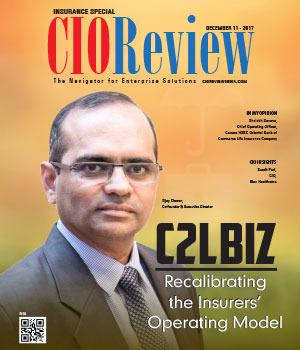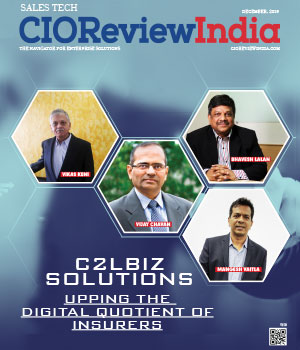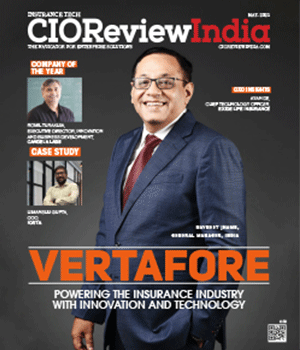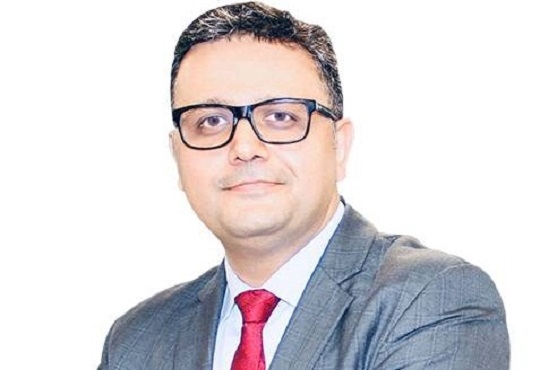
The Fourth Industrial Revolution and the Future of Insurance
Amit Tiwari, CTO, Xceedance
 The term “Fourth Industrial Revolution” (4IR) entered the business lexicon as the key topic of last year’s World Economic Forum in Davos, Switzerland. Broadly defined, 4IR refers to the advent of new, intelligent technologies that network physical, digital and biological environments. Smart and data-driven technologies at the core of 4IR are influencing society, culture, industry and the nature of work in profound ways. At Davos, it was estimated that 65 percent of today’s primary school students will eventually be employed in jobs that do not yet exist. In other words, the nature of work and the workplace will be vastly different in the future because of the unfolding implications of the “next” industrial revolution or 4IR.
The term “Fourth Industrial Revolution” (4IR) entered the business lexicon as the key topic of last year’s World Economic Forum in Davos, Switzerland. Broadly defined, 4IR refers to the advent of new, intelligent technologies that network physical, digital and biological environments. Smart and data-driven technologies at the core of 4IR are influencing society, culture, industry and the nature of work in profound ways. At Davos, it was estimated that 65 percent of today’s primary school students will eventually be employed in jobs that do not yet exist. In other words, the nature of work and the workplace will be vastly different in the future because of the unfolding implications of the “next” industrial revolution or 4IR.
Examining the insurance industry through the lens of 4IR, the London-based industry futurist-commentator Paolo Cuomo devised the useful acronym TRAMBID — telematics, robotic process automation (RPA), augmented/virtual reality (AR/VR), machine learning, blockchain, internet of things (IoT) and drones — to depict emerging technologies converging to disrupt and energize the insurance sector. In fact, TRAMBID is essentially a manifestation of 4IR in its evolutionary form, already impacting a highly process-oriented insurance industry, which relies deeply on data analytics and technology.
In a relatively short time, the wave of new technologies has advanced significantly in applicability and sophistication, making it easier for companies to organize and interpret data, and extract meaningful predictive and prescriptive insights. In the business of insurance, with increased automation value being derived from RPA as one example, it may not be long before machines carry out some of the repetitive processing tasks associated with underwriting, policy and claims operations. And blockchain, or distributed ledger technology (DLT), is a maturing option for insurers to securely execute and transmit complex transactions involving multiple parties.
Through IoT, the convergence of on-demand, streaming data and technology is fast connecting a multitude of devices, machines and processes — even as the volume and quality of structured and unstructured data continues to grow exponentially. The effects of IoT data in ‘connected’ homes or commercial structures and in all kinds of vehicles point the way. Naturally, as more accurate data becomes available to insurers, it is more realistic that many risks can be evaluated and priced individually, rather than in imprecise and general exposure categories. Accurate risk assessment and pricing works to the benefit of insurance policyholders and insurance writers. In part, that’s because insurers can leverage the combination of data and intelligent technology to be much more preventive and advisory in their risk mitigation service to insurance customers.
As a 4IR use case, blockchain has the potential for a strong impact on insurance transactions. Blockchain is gaining momentum as an emerging solution to the traditional inefficiencies of the industry’s substantial back office processes. But there are legitimate concerns, specifically about data ownership and how much or what types of data is stored in publicly accessible repositories and channels.
Nevertheless, progress is underway as insurers embrace the broader possibilities of blockchain. Last year, a group of prominent reinsurance companies launched a blockchain prototype called B3i. Less than a year later, B3i is in market testing. Thus, even with questions about blockchain, the industry is rapidly experimenting and evolving to implement this emerging technology because the ‘anytime-anywhere’ pace and the requirements of global business operations demand it.
Like all preceding industrial revolutions, 4IR — sometimes referred to as ‘Industry 4.0’ — brings both great opportunities and considerable anxiety in the networked economy. In insurance, TRAMBID elements offer access to greater volumes and accuracy of data, the feasibility to leverage automated technology for menial tasks, the potential to create more intuitive and efficient systems for managing insurance operations, and the abilities to securely execute more complex transactions.
But, in parallel with 4IR advantages, the insurance work environment and the nature of risk will evolve as well. Increasing application of intelligent technology in process-oriented tasks will redefine job responsibilities towards more analytical, decision-making and point-of-service roles. Additionally, as AR/VR becomes more mainstream in society, a range of risks could also materialize, including security/privacy issues and accidents due to distractions. Insurers will need to account for such emerging risks and adjust their underwriting, loss control and claims management strategies accordingly.
To help navigate this wave of intelligent technology and data-driven transformation, insurance organizations are also leveraging and leaning on expert external resources — such as industry-focused managed services providers. That’s because insurance-expert managed services providers can help insurers to accelerate both the scope and pace of 4IR innovation. Increasingly, insurance business and IT executives are recognizing the value of proficient partners as the difference between thriving amid a technology-driven revolution, or standing in place and risking adverse competitive implications.
CIO Viewpoint
Gen AI: Transforming Cloud Solutions for...
By Matt Yanchyshyn, VP - AWS Marketplace & Partner Services, AWS
Upcoming Technological Advancements in Payments...
By Pinak Chakraborty, CIO of Airtel Payments Bank
Shaping the Future of AI: Talent, Innovation,...
By Yann LeCun, Chief AI Scientist at Meta
CXO Insights
Redefining Insurance Democratization and Trust...
By M Jagannath, Managing Director, Life Insurance Corporation of India
Natural language Processing in Insurance industry
By Vishal Shah, Head of Data Science Digit Insurance
Significance of Customer-centric Digital...




.jpg)
.jpg)





